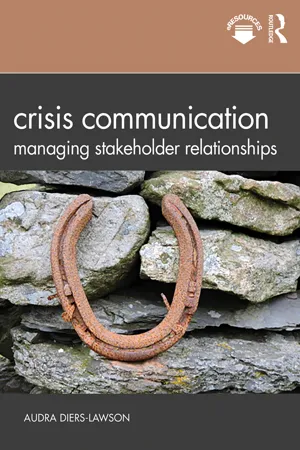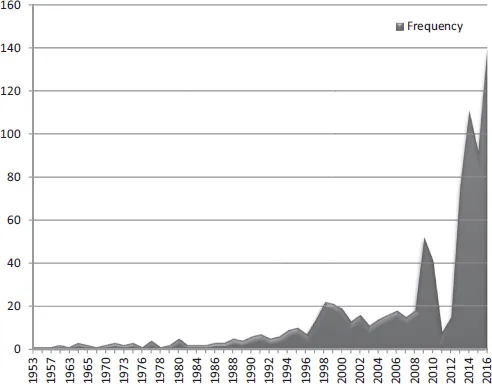
Crisis Communication
Managing Stakeholder Relationships
Audra Diers-Lawson
- 320 pages
- English
- ePUB (adapté aux mobiles)
- Disponible sur iOS et Android
Crisis Communication
Managing Stakeholder Relationships
Audra Diers-Lawson
À propos de ce livre
Crises come in many shapes and sizes, including media blunders, social media activism, extortion, product tampering, security issues, natural disasters, accidents, and negligence – just to name a few. For organizations, crises are pervasive, challenging, and catastrophic, as well as opportunities for organizations to thrive and emerge stronger.
Despite the proliferation of research and books related to crisis communication, the voice that is often lost is that of the stakeholder. Yet, as both a public relations and management function, stakeholders are central to the success and failure of organizations responding to and managing crises in a cross-platform and global environment. This core textbook provides a comprehensive and research-driven introduction to crisis communication, critical factors influencing crisis response, and what we know about predicting stakeholder responses to crises. Incorporated into each chapter are global case studies, ethical challenges, and practitioner considerations. Online resources include an extensive set of multimedia materials ranging from podcast mini-lectures to in-class exercises, and simulation-based activities for skills development (https://audralawson.com/resources/crisis-communication-managing-stakeholder-relationships/).
Demonstrating the connection between theory, decision-making, and strategy development in a crisis context, this is a vital text for advanced undergraduate and postgraduate students of Communications, Public Relations, Marketing, and Strategic Management.
Foire aux questions
Informations
Part 1
Crisis communication and the stakeholder relationship management perspective
1
Introducing crisis communication as a field of practice
Learning objectives
- Understand the evolution of the field of crisis communication from the 1950s to present
- Be introduced to the five critical factors driving knowledge and research in crisis communication
- Reflect on the state of crisis communication’s research and practice
Defining crisis, crisis communication in a 21st century context
Defining a Crisis
- Stakeholder relationship management: Managing, building, or re-building stakeholder relationships
- Narrating the crisis: Media engagement and direct stakeholder engagement across different platforms of communication – from face-to-face to social media
- Communication strategy development and implementation: A campaign-based approach using measurable objectives, good intelligence, and continual evaluation of the effectiveness of the approach
Growth and change within the field of crisis communication

